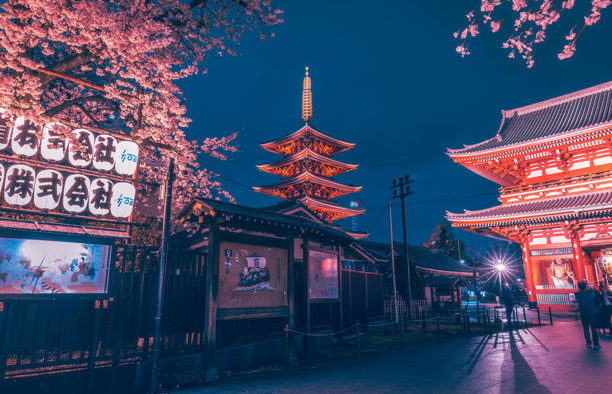6 Japanese animated films to watch once in your life

Stars of Japanese culture, and animated movies have contributed to the global popularity of the genre. These feature-length films, which were originally intended to be children’s works, have gained recognition for the depth of their writing and the range of emotions they evoke.
Studios like Ghibli, Kyoto, and Mappa are well-known for their numerous masterpieces. Some of them are still making great animated movies, but they are now well-known for their manga adaptations. Here’s a list of six movies you should definitely watch if you’re not sure which to start.
Castle in the Sky (1986), Hayao Miyazaki
Castle in the Sky, often regarded as Hayao Miyazaki’s debut picture, contributed to the European public’s growing interest in Japanese feature films. The movie centers on Sheeta, a little child who attracts the interest of avaricious air pirates due to her unusual magic stone. A pendant that holds the key to the fabled floating island Laputa’s mystery.
This was Miyazaki’s debut feature picture, and even though his films are now considered classics of Japanese animation, it set the groundwork for his later works. All of this, including his vivid graphic style that changes throughout the narrative, his numerous endearing characters, and his fantasy worlds that parallel our own, originated with Castle in the Sky.
Wolf Children (2012), Mamoru Hosoda
While attending Tokyo University, Hanna befriends an isolated man. After she assists him in succeeding academically, the two finally fall in love. Ame and Yuki, their two children, are born shortly after. Subsequently, the man dies in an accident, leaving Hanna feeling betrayed and burdened with a great load to bear alone. The father and the two infants have the ability to transform into wolves, thus the family kept this a secret.
The tale is a potent blend of happiness and sorrow. The young mother is all by herself, with no family to support her or a partner to assist in raising her half-cubs. She makes every effort to maintain her secret, even from prying social services and inquisitive neighbors. Similar to Princess Mononoke, the lead heroine in this movie is a strong, self-reliant woman who is willing to give her all for her family’s happiness.
Grave of the Fireflies (1988), Isao Takahata
In a Japan decimated by the Second World War, it is the summer of 1945. Due to their mother being killed in a bombing and their father being absent at the front with no word, Seita, 14, and his younger sister Setsuko 4, are left as orphans of war. Due to living under his violent aunt’s roof, Seita makes the decision to move out with his sister and seek safety in an abandoned bunker that is illuminated by hundreds of fireflies at night. He now has to struggle to exist in a world that is still severely damaged by the destruction and deprivations caused by conflict.
Grave of the Fireflies is a stark reality check and a far cry from the magical worlds of Studio Ghibli. A poignant tale of human suffering situated on one of the bloodiest battlegrounds of the 1800s. The film aims to evoke strong emotions in the audience by portraying the intense hardships that Setsuko and Seita face.
Spirited Away (2001), Hayao Miyazaki
Spirited Away, which made over $400 million at the box office, has long been considered Japan’s best-animated picture. The protagonist of the tale is Chihiro, a young child with a rebellious streak who is stuck in a place known as the Spirit Realm. Chihiro is forced to labor for Yubaba, a strong witch who owns a sizable bath house, and battles to reclaim her independence in a setting that seeks to destroy her sense of self.
The film is enhanced by the message it portrays, even if its superb animation is on display throughout. The movie is meant to serve as a social mirror. The shortcomings that the director aims to draw attention to are shown to us through various individuals. Spirited Away is over 23 years old, but its moral message and the way it exposes the shortcomings in our society are still relevant today.
A Silent Voice (2016), Naoko Yamada
There are a thousand words in a gesture. This is the tale of Shôko, a recently enrolled student who is also deaf. Shôya, the head of her class, bullies him. Due to the girl’s impairment, Shôya is unable to interact with her, which ultimately causes her to quit the school, leading to his own expulsion. He reunites with Shôko at school years later. He starts to doubt himself and tries everything to figure out how to talk to her and win her forgiveness.
A Silent Voice, which is based on the manga of the same name, addresses the problem of bullying in schools. The narrative demonstrates the communication issues that might develop between various student groups. The director decides to use music and body language to dynamically bring the character of Shôko to life rather than relying heavily on the spoken medium. She demonstrates that there are countless methods to communicate with this life lesson.
Your Name (2016), Makoto Shinkai
Your Name is a cornerstone of contemporary animation that defies conventions in the medium. It narrates the tale of Taki, a high school student from the capital who can’t handle the pressure of the metropolis, and Mitsuha, a girl from a small village in rural Japan who wants to move to Tokyo. One morning, they awakened in each other’s bodies. To solve this enigma, which transports them to the furthest regions of space and time, the two students must collaborate.
This is the director’s debut full-length feature picture, and it makes a strong impression with a narrative that leaves nothing to chance and an amazing modern visual style. You are engrossed in the investigation as the mystery is solved throughout the entire novel. You experienced the same level of absorption and empathy for the two students as they did, which eventually heightens the impact of the ending.

I am a dedicated student currently in my seventh semester, pursuing a degree in International Relations. Alongside my academic pursuits, I am actively engaged in the professional field as a content writer at the Rangeinn website.








